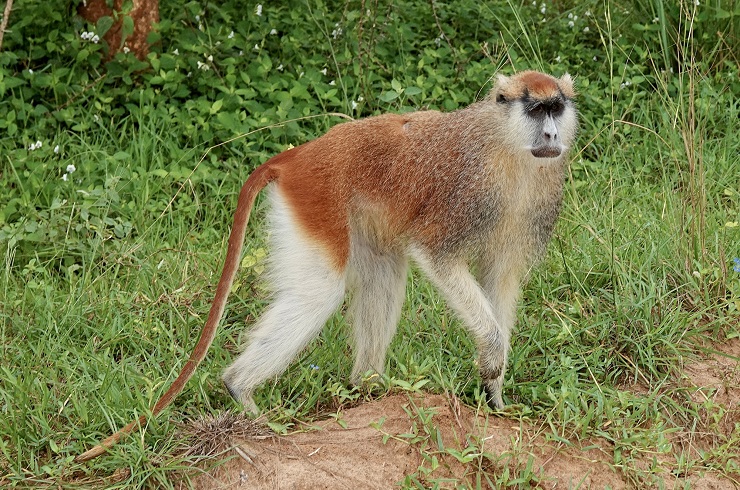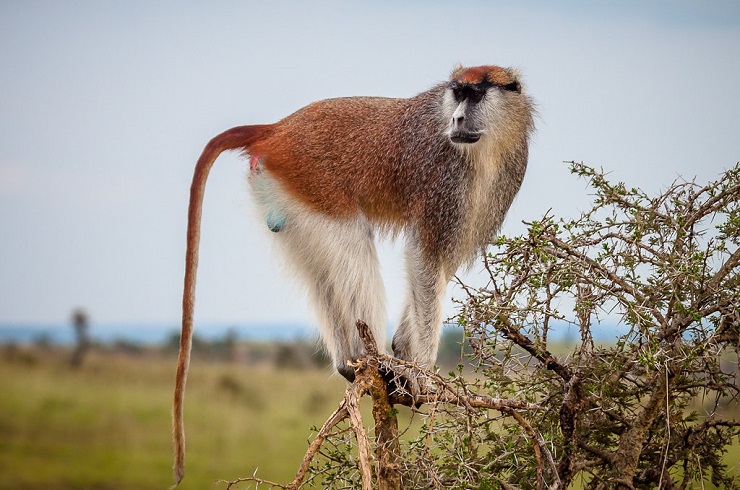Patas monkey, (Erythrocebus patas) is found in the grasslands and semi-desert regions, stretching from west to east Africa. Unlike most other monkeys, the Patas monkeys do not live primarily in trees or heavily forested areas. Instead, they prefer to live on open land.
Patas monkeys have evolved in many ways to survive on open ground. They run very fast, up to 34 mph (55 km/h) – this makes them the fastest primates on land when threatened, they do climb trees to escape from predators, but primarily rely on their running speed.
Because of the dangers associated with living on the ground in Africa, they breed very quickly to counter-act the higher mortality rate they have, in comparison to other primates.
 The adult male patas monkey has shaggy fur set off by a white mustache and white underparts, and its build is like that of a greyhound; the female has a similar but less-striking pattern and build. It is about 50–70 cm long, excluding the tail of about the same length. Male’s average weight is 12.5 kg and the female only 6.5 kg. What do Patas monkeys feed on? Patas monkeys are Omnivorous and quadrupedal.
The adult male patas monkey has shaggy fur set off by a white mustache and white underparts, and its build is like that of a greyhound; the female has a similar but less-striking pattern and build. It is about 50–70 cm long, excluding the tail of about the same length. Male’s average weight is 12.5 kg and the female only 6.5 kg. What do Patas monkeys feed on? Patas monkeys are Omnivorous and quadrupedal.
They have a wide range of plant material and animal prey in its diet. Patas usually feed on; leaves, flowers, fruits, seeds, geckos, chameleons, bird eggs and so on. They mostly feed in the morning and evening hours. They are so active during day and rest during the hot hours.
They generally lives in troops consisting of a single male with up to half a dozen females and their young; the dominant female leads the troop, the male being peripheral.
Upon sighting a predator such as a cheetah, the male makes himself conspicuous, finally running off at high speed and drawing the predator away from the females and young hiding in nearby long grass. Small bachelor male troops constantly try to invade breeding troops and mate with the females or oust the troop male.
Single births occur during the wet season after a gestation period estimated at five to six months. The young develop quickly, with females maturing at three years and males at four a shorter period of immaturity than observed in many smaller monkeys.

